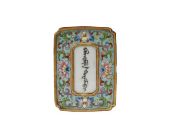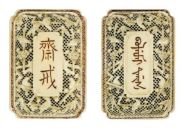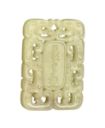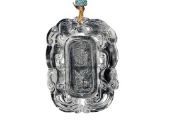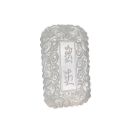Manchu right, faux and fake
There is an inscription on both sides of the plaque: one in Manchu, one in Chinese. The Manchu and Chinese appear to give an equal measure of information. Yet due to its morphology, the Manchu side of the plaque provides us with an additional layer of information.
The Manchu words bolgomi targa are both verbs, conjugated in the imperative. In other words, the plaque is giving an order: "Abstain! Purify yourself!". Whereas the Chinese can be interpreted in any which way ("One must abstain," "I am abstaining"), the Manchu side of the plaque gives a clear admonition. The reader must observe abstinence.
In spite of its position as the imperial language, the use and comprehension of Manchu declined in time. This trend shows on the abstinence plaques, where Manchu with spelling mistakes emerges while the Chinese characters remain flawless.
Too few or too many teeth, tails that are too large and misplaced dots in the Manchu inscription cause misreadings resulting in faulty spelling such as daras or danran instead of targa, or bolaumi instead of bolgomi. The continuous decline in knowledge of Manchu both during the Qing and thereafter has resulted in plaques with the most unrecognizable and monstrously deformed Manchu letters. Whether these items were earnestly worn during the Qing by officials unable to read Manchu or whether they were produced as counterfeit antiques for their high value on the collectors’ market is difficult to determine. Regardless, they are sold for incredible amounts of money on auctions, reflecting the lack of understanding of the Manchu side of these abstinence plaques.
